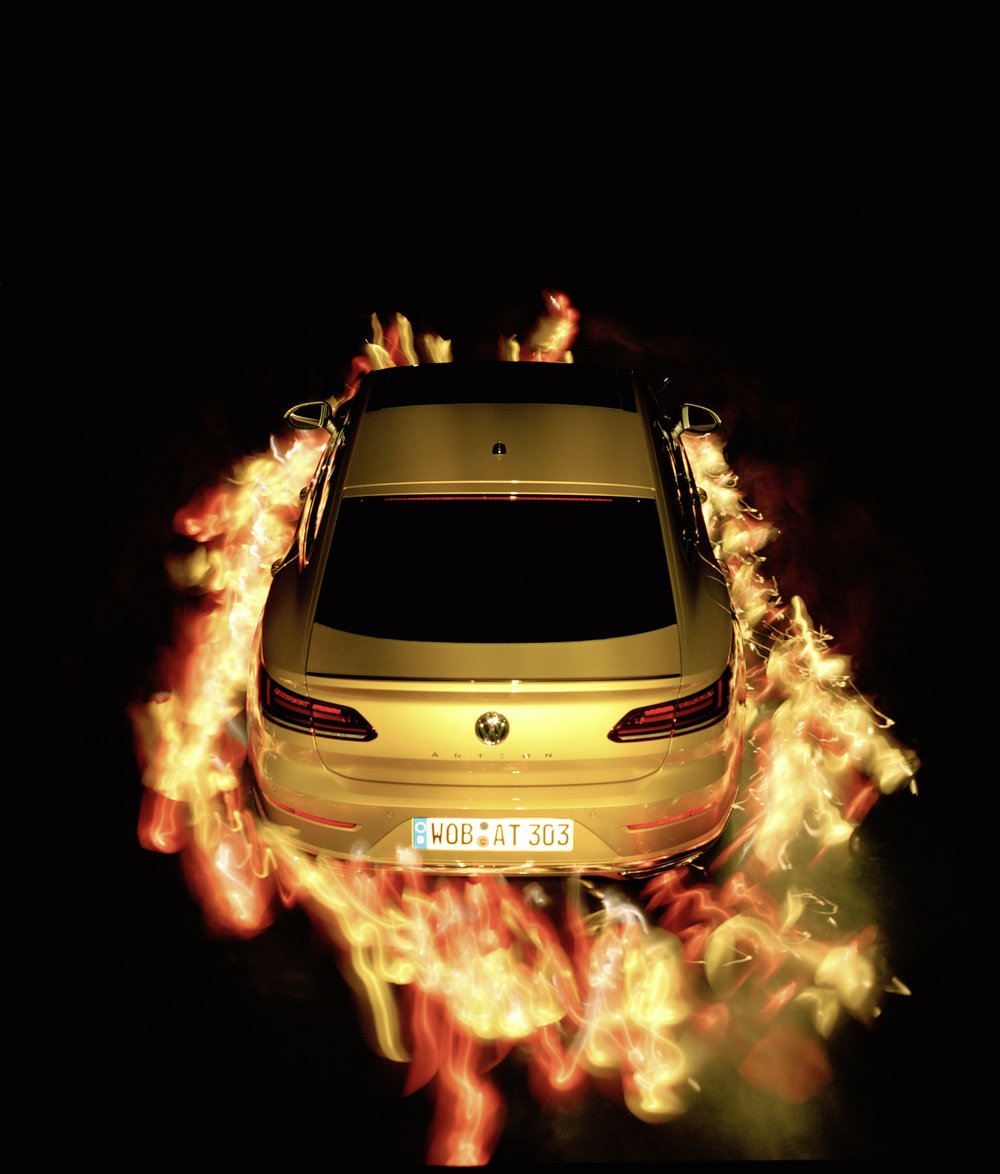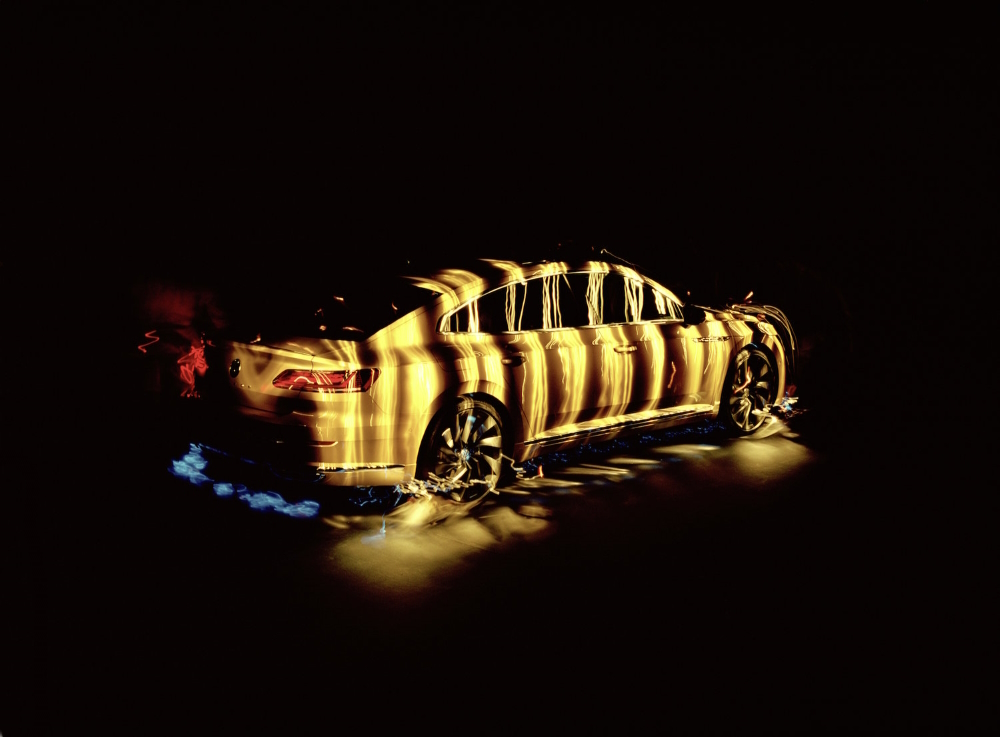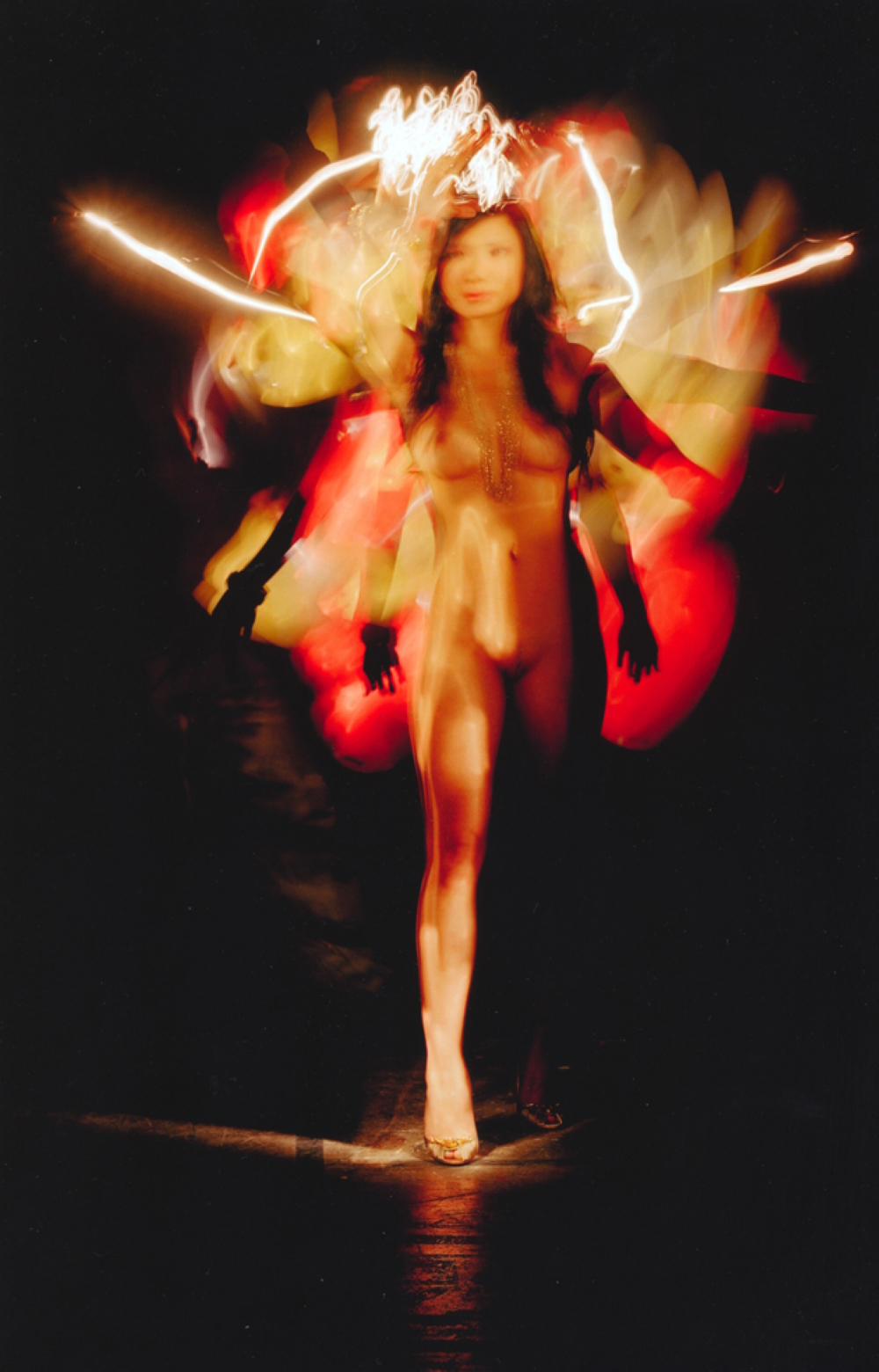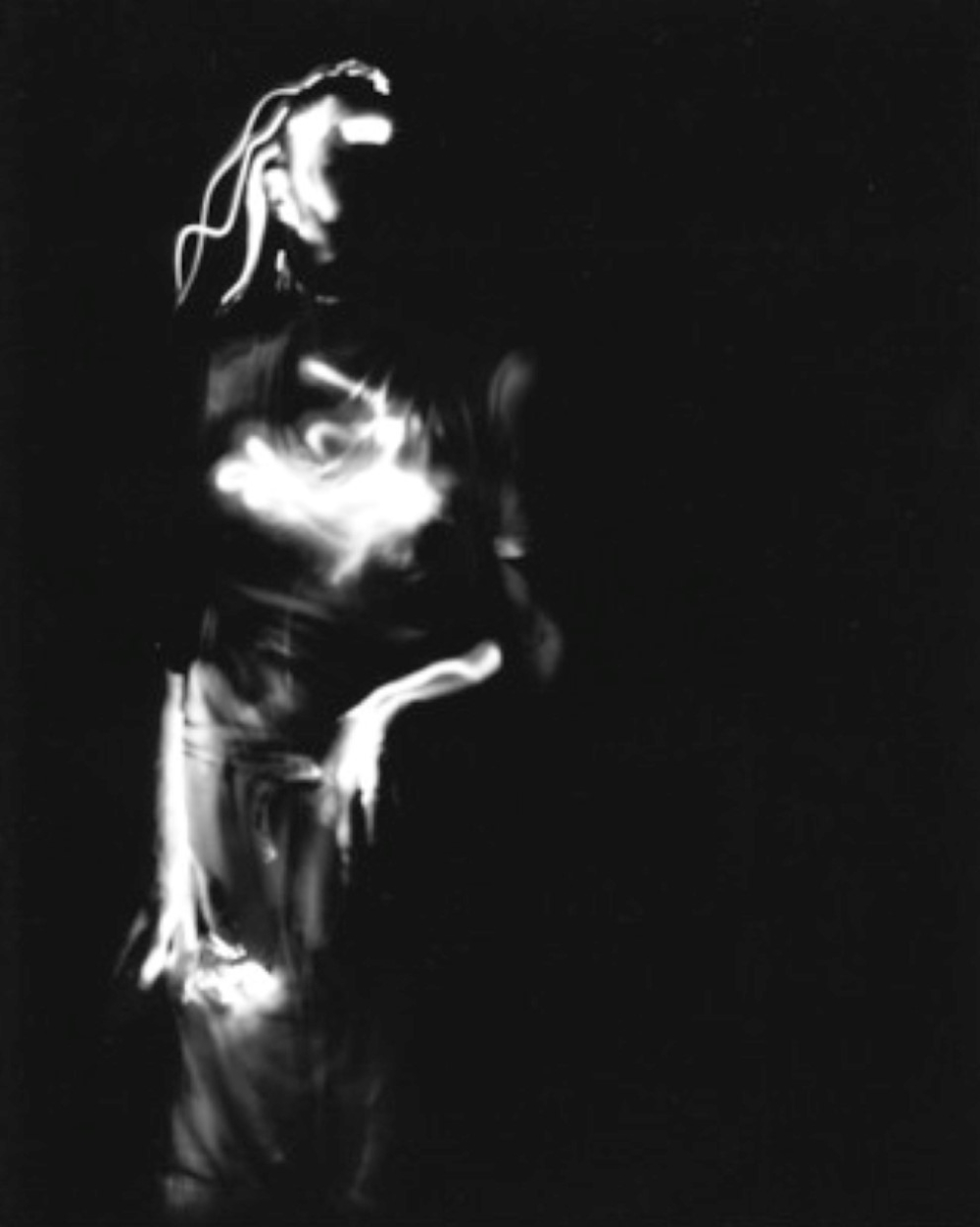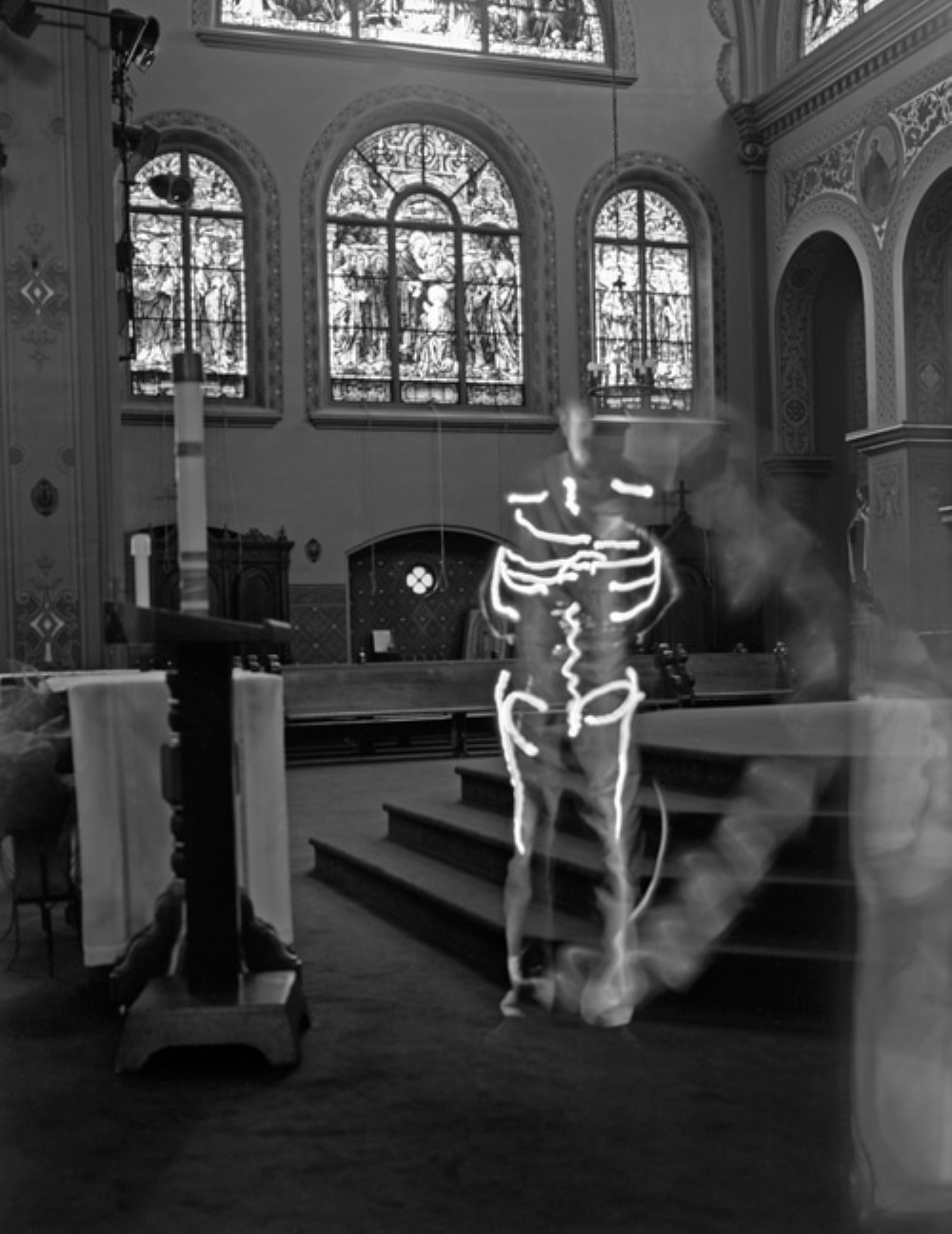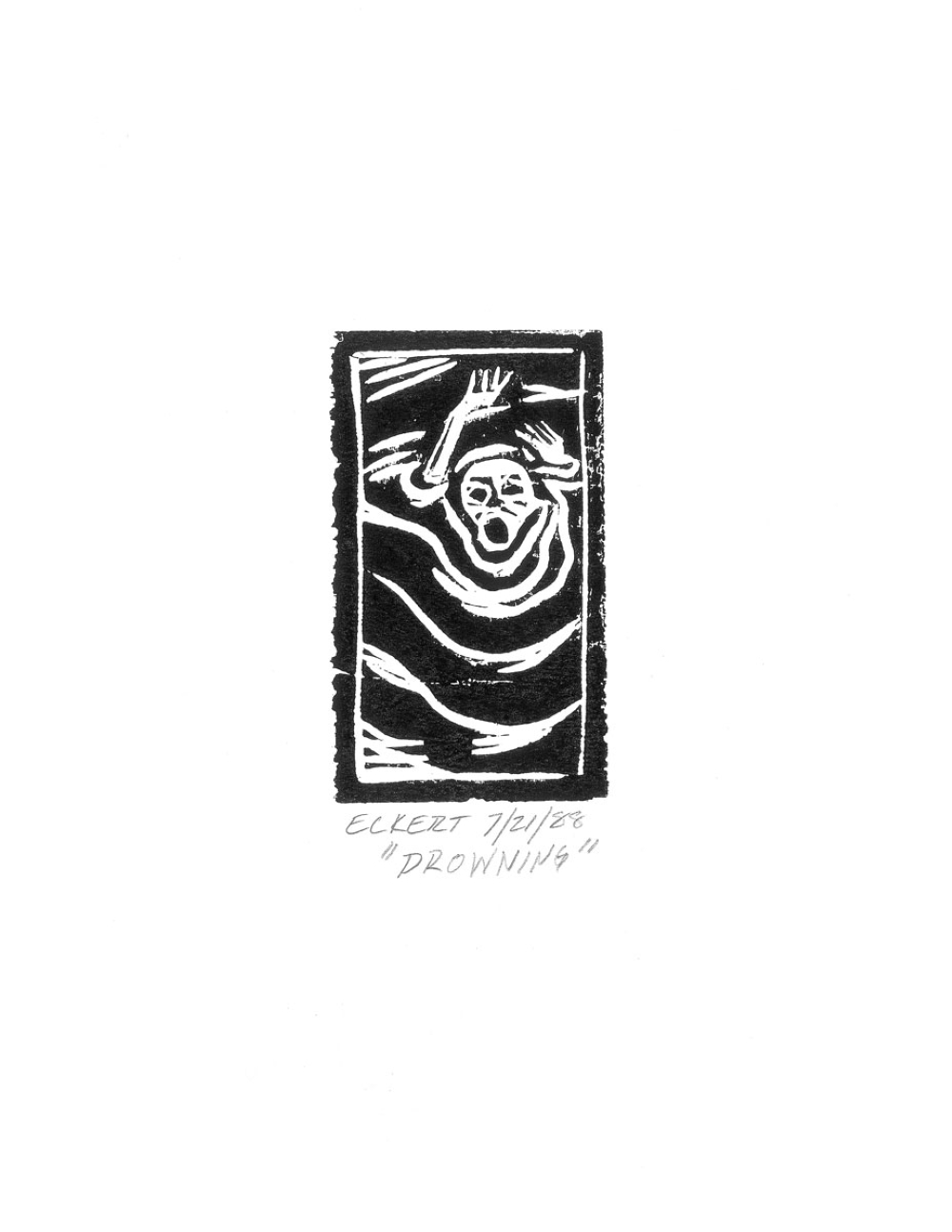Pete Eckert
blind visual artist / light painting / fine art photographer
US
VW. Google. Playboy Magazine. Swarovski. It was a premier for these world famous brands to book a totally blind photographer. This kind of cooperation might sound unusual at first, but wasn’t a risky experiment. Despite being self-taught the American is multi-awarded and famous for producing exceptional images. His technique relies on getting a vision from sound and touch plus working with long as well as double exposures. The striking results are unique, aesthetic and ghostly at the same time featuring the maker‘s typical artfully blurred lines. With his extraordinary light paintings that remind of works by the great Impressionists this blind man offers the sighted an insight into his world and point of view on art.
Pete Eckert
blind visual artist / light painting / fine art photographer
US

„I am a visual person, I just can‘t see.“ Pete Eckert’s surprising statement is proven by a look at his great body of work. One of numerous highlights is his shooting for VW’s campaign on the occasion of the Arteon’s launch in 2017. An accompanying documentary told the story of ‚The blind photographer and the new Arteon‘. Google contacted him to ask if he wanted to do an ad (premier in January 2015) to show what their collaboration with Microsoft called 'Be My Eyes' could do. The app connects blind and low-vision individuals with sighted volunteers and companies from all over the world through a live video call. A man’s dream came true for him by being booked to take pictures of Hiromi Oshima, the first Japanese Playmate, for Playboy Magazine in April 2010. New job, different company: Swarovski commissioned him to photograph their jewellery designers‘ work to be presented at the Jewelry Summit in Vienna (Austria) and opening the summit as their first speaker. Also not to forget to mention the following two remarkable key moments: his image ‚Electro Man‘ was issued as a United Nations postal stamp and episode 92 of the American police procedural tv series ‚NCIS‘ was based loosely on him plus showing various of his pictures in the American police procedural television series.
Pete Eckert‘s success as a photographer is remarkable and well-deserved, but the original cause of chosing that scope activity is purely tragical. He (* 1956) has degrees in industrial design and planned to study architecture at Yale University. For making a living, the carpenter worked as a foreman of a construction crew. But by being 27 years old Pete Eckert started going blind because of Retinitis Pigmentosa („a genetic disorder of the eyes that causes loss of vision“, Wikipedia). To channel his feelings of the traumatic experience regarding the disability he began to do graphite drawings and woodcuts for two years. Most of the pictures of ‚The Dark Series‘ are inspired by German Expressionists. Total darkness occupied him eleven years after being legally blind in September 1983. Unable to work in his former profession, the trained sculptor even had to abandon creating huge artworks because of lack of money. By coincidence Pete Eckert got hold of his mother-in-law’s old camera and started to delve into the topic of photography for gaining the necessary expertise. That was an important step, because the aimed self-realization as an artist could be connected with the perspective of possible future earnings.
It’s inconceivable and looks like a miracle for the sighted that a visually impaired person is able to take pictures of professional quality. So how’s his vision of the world turned into reality by him? "Like a bat, I can use my voice to echolocate my model. In (my pitch-black studio), I layer light, measuring what I've done until I'm satisfied with the image in my mind's eye“, Mr. Eckert told edition.cnn.com. Further down the line he claims the impressive capability of being able to store up to 100 images in his short-term memory. The master who mostly uses a Mamiya RB67 medium format camera revealed further insights into his working techniques during an interview with huffpost.com: „So getting vision from sound is like low resolution detail. Sound paints an image. It does give you the details of your surroundings. [...] I know when to stop. I know what I've done by sound and touch. I know where I was and where everything is. I develop the film. I take the picture. I do the contact sheets. Then I get some feedback. [...] I listen to a description and match it up with my memory.“ This overall process is also covered in the 79 minutes long documentary of the DVD 'Shot in the Dark' that the artist besides two further visually handicapped colleagues has participated in.
The light paintings of this versatile creative, who was the Grand Prize winner of the „Artist Wanted: Exposure“ Contest, have been exhibited on an international level. All that plus the media coverage support his important concern: „I’m trying to show how it feels to be a blind person in the sighted world“ (huffpost.com).
Pete Eckert is married. He lives and works in Sacramento, California (US).
Interview April 2023
Being blind, photographing professionally: light paintings on the basis of vision from sound
INTUITION/IMAGINATION
?: How does intuition present itself to you – in form of a suspicious impression, a spontaneous visualisation or whatever - maybe in dreams?
I’ve had intuition as if I could see into the future, into something years ahead, and it’s actually happened — almost exactly — to what I’ve seen and heard in my dream.
?: Will any ideas be written down immediately and archived?
No. I come up with an idea, and I work in themes. I shoot a series of photos to fit a theme until I feel I’ve satisfied my desire to speak about that one topic. I may end up with just one photo that’s satisfactory or a whole series that works.
?: How do you come up with good or extraordinary ideas?
As I said, I work in themes, and I pre-visualize everything. Sometimes when I talk to friends, they think I’ve actually produced an image that I’ve described to them, because it’s so well thought out. My ideas are always like that. And sometimes I don’t actually work on the idea. I’ve planned out big projects and then decided, oh, too much work, and just not done them.
?: Do you feel that new creative ideas come as a whole or do you get like a little seed of inspiration that evolves into something else and has to be realized by endless trials and errors in form of constant developments until the final result?
New ideas come usually as whole ideas, but then while I’m shooting them, I always leave time at the end of the shoot because I can’t pre-plan everything perfectly. Sometimes with the obstacles I run into, I have to change things and alter the shoot to fit the situation, just so I get something. So I always leave time at the end of every shoot to adapt. And that’s when things get really creative, because I’ve set up everything — my time, expense and light — and I’m pushed to try to get something. Sometimes my best ideas are when I’m struggling. I’ve pre-planned, and my plans have fallen apart.
?: What if there is a deadline, but no intuition? Does the first fuel the latter maybe?
As I said, I always preconceive all of my ideas. I work out all my ideas beforehand and am prepared to execute them. I’ve always finished a project before the deadline, because I leave time at the end in case.
INSPIRATION
?: What inspires you and how do you stimulate this special form of imaginativeness?
The world inspires me. Life inspires me. That we’re here at all inspires me. And so I go out into the world, where most blind people don’t go, and gather my inspiration and come home and produce these things either in my studio or mix them with the outside world, blending the surreal with the real.
?: How do you filter between ideas that are worthwhile pursuing and bad ones that you just let go of?
First, do I have enough money or tools to execute the idea? I have many ideas that are much beyond my scope of ability, just because of my resources. When Volkswagen gave me lots of money and lots of backing, I can produce very good work when you sprinkle money on me. But I produce pretty modest work because of the limit of resources.
?: Does an idea need to appeal to you primarily or is its commercial potential an essential factor?
Both. Unless people are coming to me and hiring me to produce a commercial product, I work in the fine art field. And so I’m working on my own ideas most of the time. Occasionally, somebody will come to me wanting me to produce something as a product for them.
?: Do you revisit old ideas or check what colleagues or competitors are up to at times?
I am competitive, so I do check what colleagues are doing, but only a few are using the same methods that I use. A lot of my blind friends use different methods, so we’re not competing against each other. We’re just curiosities to each other.
CREATIVITY
?: What time or environment best suits your creative work process — for example, a time and place of tranquility or of pressure? Which path do you take from theory or idea to creation?
The path I take is usually I search for themes. I’m looking for ideas. I work best in tranquility, not under pressure. I can produce under pressure, but I usually pre-think what I’m going to have to do before I get there anyway.
?: What’s better in the realization process — for example, speed and forcing creativity by grasping the magic of the moment or a slow, ripening process for implementation and elaboration?
I work best when I’m not too stressed out. The more stress I’m under, the less clearly I think. I can produce under stress, when people are watching and I’m being evaluated by my product, but it’s not my favorite way to work. I work best under calm conditions.
?: Do you have any specific strategies you use when you're feeling stuck creatively?
Yes. I have something I call throwing the cards up in the air and seeing what falls out. When I’m stuck, I broaden my search, because what makes me stuck is I’m too focused on one area. Broadening my view of what I’m looking at or what I’m conceiving often helps. I conceive of this as taking all the cards and throwing them up in the air and seeing what falls on the floor.
?: How important are self-doubt and criticism by others during such a process?
Criticism by others I just discard. They have no idea of what I work with. Self-doubt — everybody has self-doubt. But I push myself. I can go much further than I think I can go.
?: Is it better to be creative on your own, to trust only your own instincts, or to work in a team?
I like to work on my own, because then the product I finish with is all my own. But working in an environment where ideas are bubbling up is very exciting. So being amongst creative people and just working with ideas, batting them back and forth — especially if they’re creative, too — is a wonderful experience.
?: Should a creative person always stay true to him- or herself, including taking risks and going against the flow, or must the person, for reasons of commercial survival, make concessions to the demands of the market, the wishes of clients and the audience’s expectations?
I’ve actually done both — gone on my own path and gone on the path of the market. I do have to go on the path of the market to make the greatest amount of money. I make some going on my own path. But the fine artwork I produce just illustrates what’s possible to potential people that are coming to me to make a product. It’s an example of what I can do.
?: How are innovation and improvement possible if you’ve established a distinctive style? Is it good to be ahead of your time, even if you hazard not being understood?
My product is my artwork, my photos — and the world is awash in photos and images. So how do you stick out amongst all these different images? Differentiate your product. My being totally blind is a hook. People are curious about what a blind guy, a blind photographer, can do. That’s a hook. But then if I don’t have a decent product, they just go like, well, he can press a button, that’s the end of it. So I have to consider the product well within my own mind. I put the fingerprints of blindness on my product, so it doesn’t look like the rest of the world’s images that come from the sighted world. My products come from the blind world.
?: When does the time come to end the creative process, to be content and set the final result free? Or is it always a work-in-progress, with an endless possibility of improvement?
You’re asking when you know you’re finished. I preconceive my images so I know I’m finished when I’ve completed, in my mind’s eye, building the image that I’ve already preconceived. That’s when I stop working. Beyond that, I play with the ideas and see what I can produce around the bounds of my theme.
?: In case of failure or, worse, a creativity crisis how do you get out of such a hole?
Sometimes I do totally crash and burn, and then I have to decide on a new direction. So it is possible for me to crash and burn — in front of people, too. I’ve had times when I simply forgot to remove the dark slide, so I’m merrily taking pictures, building images, but they’re not getting to the film. And I’ve failed.
SUCCESS
?: “Success is the ability to go from one failure to another with no loss of enthusiasm.“ Do you agree with Winston Churchill’s quote?
Basically, I agree. I’m obsessed, so I’m going to go on no matter what. I’m not obsessed with photography per se. I’m obsessed with creation. I’m an artist, and I could produce in many different media. The chosen medium presently is photography. And since it’s providing the most money, I’m surviving well on photography. Most of my ideas are surrounding that. So I will continue, no matter what happens.
?: Should or can you resist the temptation to recycle a ‘formula’ you're successful with?
No, I’m willing to recycle a formula to come up with products. If I’m presently out of ideas, sometimes I do just that.
?: Is it desirable to create an ultimate or timeless work? Doesn’t “top of the ladder” bring up the question, “What’s next?” — that is, isn’t such a personal peak “the end”?
Sometimes a huge success is a little bit of a stumbling block. Like, what do you do next? It’s a little dismaying when the next work isn’t quite as good. But, for me, it’s really how much money and resources I have to work with. With lots of money and resources, I can produce great work. I know it. I’ve done it. But producing modest work when I don’t have as great resources, that’s OK, too.
MY FAVORITE WORK:
The work I’m most proud of is the shoot I did for Volkswagen in 2017 — the Arteon car shoot. It’s still on the web. The reason I’m proud of this shoot is that it broke ground. It was the first time in history that a blind man was paid well for his artwork. Blind people have been paid before for our artwork but not at its true value. People have tried to buy our artwork at a discount because we’re blind and are poor. The Volkswagen shoot was a historical shoot not only because of what the product was — my product, not the car — but the amount of money I gained from it.

